No, levelheaded professionals that we were, we did what most staff officers usually do: nothing. Well, not exactly nothing – Philip Caputo – A Rumor of War
For most Army military officers Vietnam was either the starting point or the close to the ending point of a career. Remaining in the military as a career made one a ‘lifer’.
Surviving a combat tour was the initial step in either continuing in the Army or departing for a more pleasant and financially rewarding civilian career and lifestyle. Those who stayed would need 20 years or more to gain a full retirement income along with associated ‘benefits’ care of Uncle Sam.
In those 20 years increasing military education would be required along with several duty assignments of increasing responsibilities and postings in various geographic locations – for the convenience of the government.
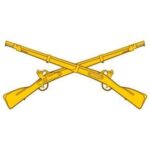
The infantry jungle warriors experienced the worst of Vietnam, traveling and living daily in the bush.
Artillery officers were usually based inside semi-permanent perimeters protecting gun and ammunition emplacements while Engineer officers moved around in local areas building or demolishing as the missions required.
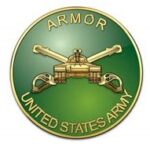
Armor officers rode and slept in their tanks – but the monsoon season would bog them down!
Helicopter crewmen flew everywhere – trying to avoid enemy fire.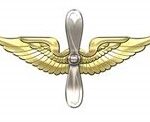
A young Lieutenant would start a career as a platoon leader under the supervision of a Captain who was the company commander. The Captains commanded the lowest command level both in the field and in garrison.
Field grade officers – Majors and Lieutenant Colonels were grasping for the brass ring to increase their longevity and pay scale before retirement. Majors wanted to be Lieutenant Colonels.
Lieutenant Colonels wanted to be Colonels who wanted to be Generals and so on. PR is required to advance promotions in these grades – PR = personality and responsibility.
Majors usually occupied staff level positions in larger units although some were given commands of support units – those units not involved in front line combat arms. ‘Major’ is the most dangerous rank in the Army officer corps. One level above Captain – one level below Lieutenant Colonel (LTC). Majors desperately needed the promotion to LTC to guarantee a move to higher command position and 20-year retirement package.
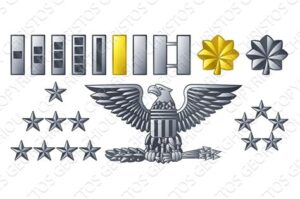
Most, if not all, of these officers are Lifers.
Translated, don’t make the guys above you mad.
The Vietnam officer schemes provided six months ‘combat command’ assignments – command, combat, and college were the 3C’s essential for higher grade promotion. Some Majors could command support units (and large combat helicopter units!), lucky LTCs garnered command of Infantry or other combat arms Battalions. Successful and competent completion in these assignments was almost a certain assurance to the next higher grade.
Two very personal examples: 1) removing the pilot and co-pilot doors on our gunships provided better visibility (especially in the break from target) and easier egress/evacuation (no entrapment) in the event of a crash. Our C.O. in mid-1969 forced us to fly with doors ‘on’ and if caught flying with them off would be a court-martial offense (well I really doubted it). We flew doors on from base camp to standby area – then removed the doors while away from home.
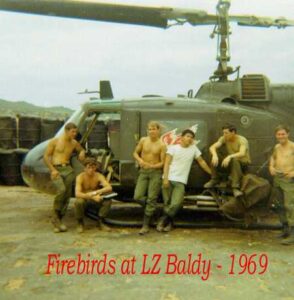
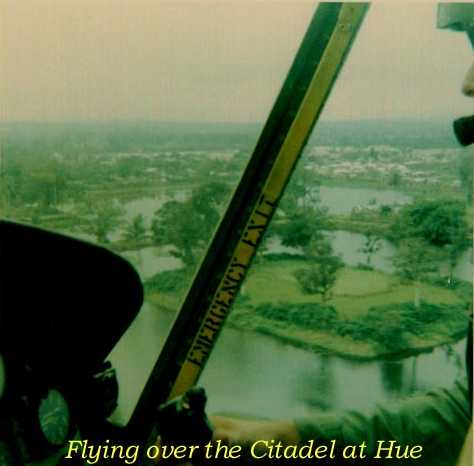
The doors went back on flying back to base camp. The C.O. erroneously declared the doors as a structural part of the aircraft – a falsehood confirmed by Bell Helicopter manufacturer. Only the door frame is structural – the doors are enclosures. Had the doors been on my aircraft the day the small arms ground fire whizzed through my open door shooting out the greenhouse above my head, no doubt I would have been wounded by metal and Plexiglas fragments had the door been on.
Example 2): white flight helmets were declared a target aiming point for enemy ground gunners. The same C.O. prohibited wearing white flight helmets – the same white helmets issued by the U.S. Army and in use since the inception of Army aviation. So, an enemy ground gunner would see this tiny white speck (helmet) inside the door opening of a helicopter flying between 50 and 120 mph and successfully shoot someone.
The decree was flying with OD green helmets only. Tell that to Dave Jackson who was flying at well above the kill zone at 2,500 feet and was shot in the face by ONE large caliber round. Brains, blood, and bone scattered inside the cockpit – his OD green helmet didn’t do a great job of containing the exploding mass of tissue. Lifers made bad decisions, but good career choices.
Rear echelon MFs were a despised bunch of military personnel who stayed mostly ‘in the rear with the gear.’ REMFs were necessary to facilitate administration, supplies, and services to the combat units. The REMFs were the essential lifeline for forward deployed soldiers. Everything from food, ammunition, fuel, clothing, pay & finance, personal mail, etc. all depended on the actions of the REMFs.
The combat REMFs were assigned to forward deployed battalion units in fixed field locations. These guys smelled the battlefield and listened to the frantic calls from the field deployed units. Slept in the same bunkers as the combat staffers. Ate C-rations and used field latrines, same as the troops. Listened to the artillery barrages and pulled nightly perimeter guard duty.
The next level up is the service & supplies guys – stationed at large division rear logistics areas. Process, schedule, and deliver all services and supplies to the field units outside the ‘wire.’ Soft beds, good food, evening entertainment, unsmudged letters written home, regular laundry service. Cold beer, too!
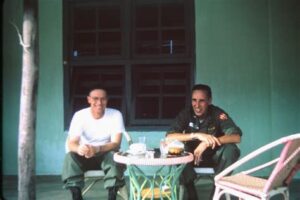
The eau de cologne clerks alongside the coffeepot commandos and the typewriter twerps at US Army HQ – Vietnam. Easy living, Sansui stereo receivers, TEAC reel-to-reel tape decks, large cabinet size speakers. AFVN radio and TV! AIR-CONDITIONED billets, three tasty meals a day, the city-life, girlfriends, get around town transportation. These were the REMFs who were enjoying Stateside duty – except the States were 8,000 miles away. But their Sigh-Gone living and duty were the next best thing. Enjoy it while you can.
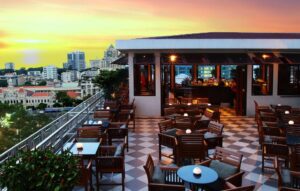
Pleasant evenings at the Hotel Caravelle reading the daily Stars & Stripes news. Drinks and dinner in a civilized setting – rooftop dining did not require your poncho liner to cover your food in a rainstorm. Bright city street lighting to your nightly rendezvous – not down the dark trail to the jungle latrine. Most times the living was easy in Saigon. The only ‘war stories’ that were told would be the UPI or AP guys who ventured to War Zones C or D, only to return before dark. Especially important if you had a Happy Hour date at the Caravelle. ‘War is Hell!’
A specialized group of REMFs known as the ORA – the orderly room Army who were the administrators at every unit level. The ORA controlled personnel records, financial assistance, reassignment requests, supply requisitions, and the myriad of endless reports to ‘higher headquarters.’ The ORA was primarily staffed with the 71L-(Lima) clerk. A friendly First Sergeant was always helpful.
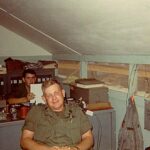
Mostly used and abused, the typewriter/clerk could make your life glad or sad. The clerk could cut your orders for R&R to Sydney or Singapore or could lose your records in the bottom desk drawer under a pile of paperwork. ‘Lost’ in the Army’s huge system. Delayed or no promotions. Finance and pay malfunctions. Orders to your next duty assignment suddenly changed. One needed to be nice to the unit clerks.
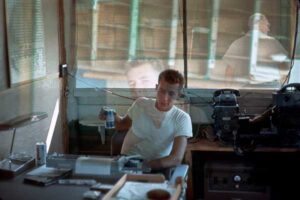
Their working tool was the mechanical typewriter. Their working desk might be an OD green wooden folding field table or the standard government grey metal desk – one each with center drawer and three drawers, left and right sides. The manual typewriter was old, and the black ink fabric ‘ribbon’ older and faded. Type written documents were usually difficult to decipher – some keystrokes darker than others, and others missing half the lettered imprint.
The ORA was essential to unit functioning – the C.O., the X.O., and the 1SG were the key controllers of unit administration. The clerks were the operatives with an information network more connected than the very often unreliable CIA.
The ORA has never lost a paperwork battle and is the only Army unit that has never and will never be defeated.
(c) Copyright – 2023 Vic Bandini